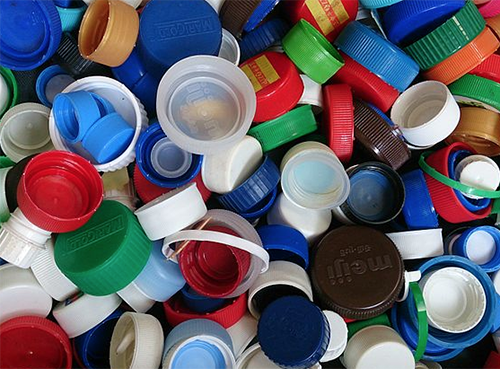Toxic chemicals may migrate into food or beverage products from food contact materials.
Market leaders take responsibility for their own operations, and also for their upstream supply chain.
Find out how to prevent potential harm to your customers, the environment, and your bottom line.

Pick a starting point in your supply chain:
We'll help you choose safer, more sustainable alternatives that are available and effective.
Grocers and Restaurants
1. DETOX PRIVATE-LABEL PACKAGING
Cap liners on bottles & jars »
Can coatings (coming Soon)
2. AVOID TOXIC FOOD SERVICE WARE
Disposable gloves »
Plastic wrap »
Containers (coming soon) »
3. HOLD BRAND OWNERS ACCOUNTABLE
Brand Owners
1. DETOX YOUR PACKAGING
Cap liners on bottles & jars »
Can coatings (coming Soon)
2. CLEAN UP YOUR PROCESSING PLANTS
Tubing »
Conveyor belts »
3. HOLD YOUR SUPPLIERS ACCOUNTABLE
Food Processors
1. DETOX YOUR EQUIPMENT
Tubing »
Conveyor belts »
2. CLEAN UP YOUR PACKAGING
Cap liners on bottles & jars »
Can coatings (coming Soon)
3. HOLD YOUR AGRICULTURAL SUPPLIERS ACCOUNTABLE
Dairies and Other Farms
1. CLEAN UP YOUR OPERATIONS
Dairy inflations »
Conveyor belts »
Tubing »
Three things all food companies should do:
#1 Adopt a Public Policy
Market leaders should adopt safer chemicals policies to track and restrict the use of hazardous substances in food service ware, packaging, and processing across their supply chain. They adopt quantifiable goals to avoid or reduce the use of chemicals of concern and virgin plastics. They embrace transparency and continuous improvement of the safety and sustainability of all food contact materials. the policy should steadily expand to encompass the entire supply chain for both ingredients and food contact materials.
#2 Ask Suppliers to Disclose
Holding suppliers accountable is a mark of effective chemicals management. Suppliers of both ingredients and materials should be required to fully disclose the chemical content of all food contact articles, including type of plastic, rubber or other materials. If they don’t know, they should ask suppliers further up the supply chain. Third party vendors can overcome any confidentiality issues. Full sharing of information up and down the supply chain remains critical for food safety.
#3 Report on Progress
Every food company should publish an annual corporate sustainability report that includes gains made in knowing and disclosing the chemistry of food contact articles in its supply chain. Each should report on progress made on reducing or eliminating chemicals and plastics of environmental health concern. Disclose efforts to ensure that alternative chemicals and materials are truly safer. Take credit for any investments or collaborations to develop safer, more sustainable food contact materials.






